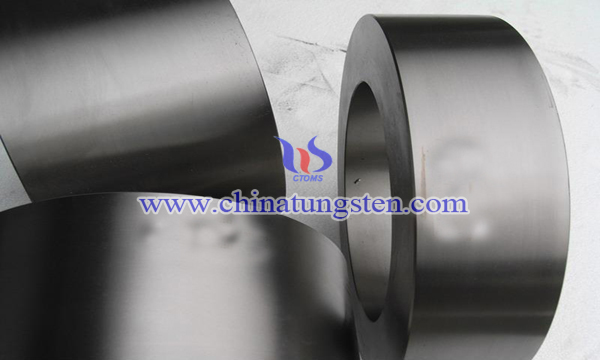Nickel-tungsten Alloy Composite Base Tape Preparation by Melting Method
- Details
- Category: Tungsten Information
- Published on Friday, 27 September 2019 21:52
At present, rolling assisted biaxial texture technology (RABiTS) is one of the main methods for fabricating textured metal substrates for high temperature coated superconductors.

At present, 100-meter cubic textured Ni-5at.% W alloy baseband has been widely used in the research of second generation high temperature coated superconductors. With the further application of superconducting materials, the mechanical strength and magnetic properties of Ni-5at.% W alloy baseband can not meet the requirements of high performance YBCO coated conductors. However, nickel-tungsten alloy with high tungsten content has low stacking fault energy, which makes it difficult to obtain strong cubic texture by traditional RABiTS technology.
In order to improve the mechanical strength and reduce the ferromagnetism of Ni-5at.% W alloy baseband, the preparation of composite baseband can effectively improve the mechanical strength of the baseband and reduce the overall ferromagnetism of the baseband, which is a new design idea. However, at present, the preparation technology of composite baseband is complex and expensive, which is not suitable for industrial production. How to fabricate high performance layered nickel-tungsten alloy composite baseband efficiently on the premise of cost control?
In order to achieve the above purpose, some scholars have used melting method to prepare textured nickel-tungsten alloy composite baseband, which includes the following steps:
(1) Preparation of Composite Ingot
The nickel-tungsten alloy ingot with 5%-7% tungsten atom content obtained by melting is processed into a round rod with a diameter of 10 mm. The oxide skin on the surface of the ingot is polished as the core material of the composite ingot. The nickel-tungsten alloy ingot with 10% tungsten atom content obtained by melting is processed into a tube with an inner diameter of 10 mm and an outer diameter of 15 mm. After grinding the oxide skin on the surface of the composite billet, the core rod is inserted into the outer tube, and the core rod is drawn one by one. The pass deformation is 30%-45%. Finally, the composite billet is obtained by diffusion annealing. The diffusion annealing process is 800 ℃ for 30-40 min.
(2) Cold rolling and recrystallization heat treatment of composite billet
The composite ingot obtained in step (1) is cold-rolled to a thickness of 60-120 um with large deformation, then the width of 3-3.5 mm is cut off on both sides of the cold-rolled strip. Finally, the cold-rolled composite baseband is recrystallized in hydrogen to obtain a high strength and low magnetic cubic texture nickel-tungsten alloy composite baseband. The recrystallization heat treatment process is as follows: 1080-1120 for 30 minutes.
Initial ingots of inner and outer layers of textured nickel-tungsten alloy composite baseband are prepared by melting method. The nickel-tungsten composite ingot is obtained by drawing method with high efficiency and low cost. After drawing, diffusion annealing is used to make elements of inner and outer layers diffuse to form metallurgical bonding at the interface, which makes the bonding strength of the interface of composite ingot higher and complete. It meets the requirements of low cost and high quality industrial production.
- Tungsten Alloy Manufacturer & Supplier, Chinatungsten Online: www.tungsten-alloy.com
- Tungsten News & Prices of China Tungsten Industry Association: www.ctia.com.cn
- Molybdenum News & Price: news.molybdenum.com.cn
- Tel.: 86 592 5129696; Fax: 86 592 5129797; Email: sales@chinatungsten.com



 sales@chinatungsten.com
sales@chinatungsten.com